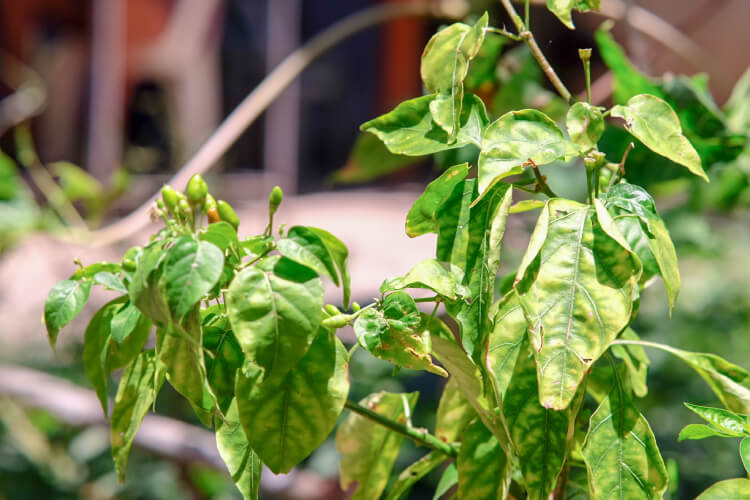Peppers of all types are consistently near the top of the list for popular garden plants. And why not- they’re tasty, packed with nutrients and in most cases, pretty easy to grow. But occasionally, problems with your peppers can pop up, including the leaves taking on a misshapen, curled appearance.
Pepper plant leaves curling can be due to several causes:
- Pest infestations
- Plant diseases
- Improper watering
- Temperatures too cold or too warm
- Herbicide exposure
- Insufficient light
- Nutrient deficiencies
- Root constriction (in potted pepper plants)
Seeing your pepper plant leaves curling can make you worry that you’ll lose your entire harvest. But fortunately, a prompt response on your part can often correct the problem.
John Thomas, owner and operator of Backyard Garden Geek, agrees. “Leaf curl can take place at any time throughout the growing season, but in my experience, I see it most often in the spring and early summer, when the pepper plants are still rather young. The good news about leaf curl is that it won’t affect your crop unless you ignore the problems that cause it.”
In this article, you’ll learn the details of the problems behind jalapeno, bell pepper and chili plant leaves curling and what to do next to get your plants back on the right track.
Let’s jump in!
RELATED: Looking to reduce food waste? Learn how to collect, dry and plant pepper seeds from scraps you normally throw away!
Table of Contents
1. Pests
If you see a couple of leaves curling and not the whole plant, it’s most likely a pest problem. Common pests for any type of pepper plant (jalapeno pepper, bell pepper and chili pepper) include:
- Thrips
- Aphids
- Whiteflies
- Spider mites

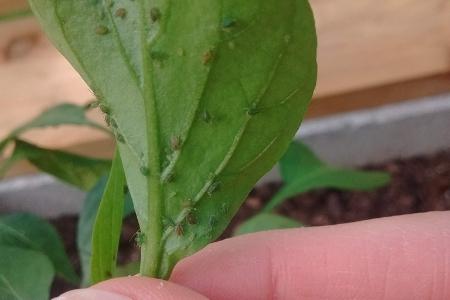

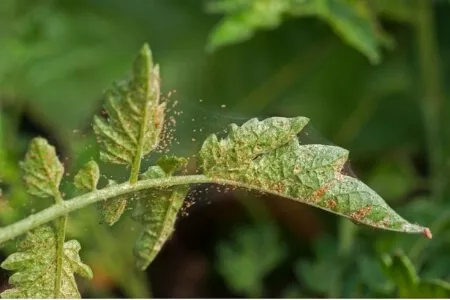
These pests feed on the sap running through your pepper plants’ leaf veins, causing the leaves to curl and shrivel. Given enough time, pests can literally drain the life out of your garden plants. Even minor infestations could be a reason why your bell peppers are small or oddly misshapen.
Solution: Treat the Pest Infestation
If you see any of these pests on your peppers, act quickly. I’ve lost plants before to pests because I didn’t treat the problem (aphids, in my case) aggressively enough.
Try a couple (or all) of these solutions:
- Use your garden hose to wash as many pests as possible off. You don’t need to have your water spray on full blast, but you also don’t want a gentle trickle. So use enough water pressure to carry pests away but not damage your plants.
- Spray any affected pepper plant with neem oil or insecticidal soap.
- Remove pest-damaged parts of the plants.
- Use good companion plants like alyssum, basil and onions to deter pests.
When it comes to pests, prevention is the best solution. Keep a close eye on what’s going on with your plants every day or two, and be sure to look underneath leaves and in the nooks and crannies.
Overcrowding your garden can make it hard to see individual plants, so make sure to leave plenty of space between your pepper plants.
2. Plant Diseases
Sometimes leaf curl on pepper plants is due to viral and/or bacterial diseases. Here are some common pepper plant diseases:
- Mosaic virus (aka tobacco mosaic virus): Spread through seeds, soil and insects like aphids.
- Verticillium wilt (aka bacterial wilt): Found in fields that formerly grew tobacco, mostly in hte southern U.S. states.
- Phytophthora blight: Found in soil, causes early or late blight.
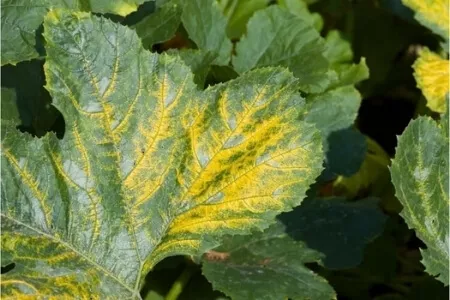
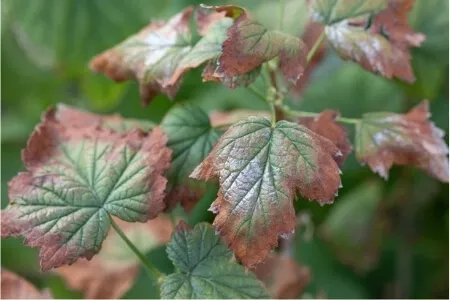

Solution: Treat the Disease
Unfortunately, once a plant has been infected with a disease, it will not recover. And if you leave a diseased plant in your garden, the infection could spread to other plants.
So if you’ve determined that a plant disease is to blame for your pepper plant leaf curl, remove the affected plant immediately. Do not put a sick plant in the compost pile; instead, bag it up separately and throw it in the trash.
Be hyper-vigilant in your other plants to look for the earliest signs of disease, and act right away if you spot any trouble.
According to the University of Minnesota Extension, the best ways of dealing with viral and bacterial diseases include:
- Using clean seed
- Buying healthy pepper plants with viral resistance
- Crop rotation
Other ways include using fresh soil, removing any infected leaves/peppers/plants, water only when necessary and only at the plant base. Since some diseases are spread by pests, spray your plants with neem oil or insecticidal soap to stop a problem before it starts.
3. Under-Watering
If you notice your pepper plant leaves curling upward, that’s often a sign that your plants don’t have enough moisture.
The curl is a protective measure to conserve as much moisture as possible. By drawing the leaf edges inward, the total leaf surface area shrinks, thereby reducing moisture loss to evaporation.
Solution: Add More Moisture
Peppers like evenly moist soil- not too dry, not too wet. Monitor the soil moisture and water when the top 1-2 inches of soil feel dry.
How often you water depends greatly on your local weather and your garden’s soil conditions. During our Midwestern summer, I need to water my container pepper plants every morning. During the hottest stretches, I sometimes need to add another watering in the early evening.

4. Overwatering
Here’s the opposite problem, and it can kill your pepper plants just as quickly as under-watering.
Downward leaf curl is one way to tell if you might be overly generous with your watering. When there’s too much moisture, cells within the plant can burst, leading to mushy, water-logged leaves and stems. Also, too much water in the soil can prevent the roots from absorbing nutrients and oxygen.
Solution: Water More Sparingly
When it comes to overly moist soil, there are two potential problems (and solutions!):
- First off, make sure there’s good drainage so water doesn’t just sit in the soil. If you’re growing your peppers in pots, check the bottom drainage holes for obstructions. For your in-ground peppers, aerate the soil and break up any hard clay before planting.
- The number two solution is to only water when the top 1-2 inches of soil feel dry.
One note about clay: It’s often thought of as a curse, but clay is actually really good at retaining moisture, meaning you’ll typically need to water less often. Breaking up the hard clay will help distribute the clay evenly throughout the soil, helping with drainage as well as moisture retention.
5. Cold Temperatures
It can be exciting to plant your jalapeno, bell, and chili plants in the springtime, but sometimes a surprise cold front can drop temperatures a bit too low for their preference.
Light frost damage for a few hours can start as curling leaves, and beyond that time frame you may see the leaves turning black. Unfortunately unless protected from cold, pepper plants will die if it reaches freezing temperatures.
Solution: Plant at the Appropriate Local Temperature
Peppers prefer temperatures between 60 degrees and 90 degrees Fahrenheit, and knowing your zone can direct you as to when to plant your peppers outside.
Know your USDA plant hardiness zone and plant accordingly for your region. Don’t let those first few days of warm, sunny temperatures fool you- wait until your region is well past the last expected frost date.
If there is a freak cold front and you’ve already planted your peppers, protect them with towels, tablecloths or plant fabric supported by plant stakes.
6. Hot Temperatures
Too-hot temperatures (above 90 degrees F for several days in a row) can also lead to curled leaves on pepper plants. Here again, the leaf curl is your plant’s effort to protect itself from the heat by reducing vulnerable surface area.
Especially if the heat is coupled with high humidity, flowers may drop as well, which leads to fewer peppers as well as scalded fruits.
Solution: Water Generously, Provide Shade and Mulch
When there’s a heatwave in the forecast, plan to water your pepper plants every morning. And set a reminder to check them again in the evening, watering if necessary.
Consider putting up shade over the plants to decrease the temperature and risk of scalding. Drive stakes into the ground to support lightweight fabric, like plant shade cloth or a sheet. Weed barrier can also work as a makeshift sunshade if you have some extra on-hand.
Adding mulch around your peppers also helps keep more precious moisture in the soil where it belongs. These are some good choices for mulching your peppers:
- Compost
- Grass clippings
- Shredded leaves
- Straw

7. Poor Lighting
Pepper plants are sun lovers, and they require 6 or more hours of full sun daily to be able to produce bountiful fruits.
If it doesn’t get enough sunlight, it will lead to leaf curl on pepper plants in an attempt to conserve energy.
Solution: Provide as Much Light as Possible
Trim back any plants that may be blocking the sun from your peppers, including overhanging tree branches. If you’re growing your peppers in containers, you’ve got an easier solution: Move your pot to a sunnier location.
For indoor pepper plants, use the brightest window you’ve got available, and consider supplementing with a grow light to get to 6+ hours of daily light.
8. Herbicide Exposure
Most herbicides are formulated to target broadleaf plants, which include many popular garden veggies. Pepper plants are among the most sensitive vegetable plant to herbicides, and the University of Minnesota Extension lists those that contain dicamba, triclopyr, and glyphosate as the most problematic for fruit and vegetable plants.
Leaf curl from herbicide exposure typically looks like twists and gnarls in the leaves, and the damage often shows up on random leaves or stems instead of affecting the whole plant evenly.
Even if you don’t use any herbicides on your lawn or garden at all, herbicide drift is a real problem. According to North Dakota State University, some chemicals can travel up to 2 miles on the breeze.
So if you live in a suburban/urban area, your plants may be affected if your neighbors get their lawns treated. And in rural areas, farm spraying could present an issue for your garden.
Solution: Protect Your Plants from Chemical Exposure
If your peppers are showing signs of herbicide damage, your best bet is to remove the affected plants from the garden and destroy them. As painful as that is, it’s better than taking the chance of consuming chemicals in your fresh peppers.
This video from the Family Garden Plot addresses this topic:
You can’t help what other people do. But if you know that your neighbors use herbicides at times, try to place your plants in as sheltered of a location as possible. For example, the most sheltered area in my yard is in a narrow grass strip between my house and backyard fence, so that’s where I’ve set my veggies.
I always recommend non-chemical weed and pest management whenever possible. But there may be a few situations where an herbicide is called for, such as dealing with stubborn weeds like pokeweed.
If you do need to use any chemicals of your own, choose a quiet, non-windy day to sparingly use the herbicides away from your pepper plants. Do your best to contain the spray to just the weed being treated- applying the chemical with a targeted wand or even a small paintbrush can help reduce the danger.
Also, be sure not to use grass clippings previously treated with herbicides as mulch since this can contaminate the soil around the pepper plants.
9. Nutrient Deficiencies
Nutrient deficiency can be the cause of chili plant leaves curling and bubbling, specifically calcium deficiency. Calcium is essential for plants to build strong cell walls and grow properly. If there’s not enough calcium in the leaves, the cells can lose their normal structure, leaving you with wrinkly or curled leaves.
There could be two problems going on here:
- Your soil is lacking in calcium
- Your soil calcium level is fine, but your plant can’t transport it
The second one happened to me last year. My pimento peppers were doing great until all of sudden, they weren’t. Instead of being smooth and flat, the leaves looked bubbly, bumpy and a bit shriveled:

I learned that plants transport the bulk of their nutrients during the night, moving them from the roots, through the stems and all the way to the leaf tips. When nighttime temps dip below 60 degrees Fahrenheit, the calcium essentially gets “stuck” at the root or stem level, leading to a deficiency in the leaves. Which then shows up as curling or wrinkling.
Solution: Check Soil and Weather Conditions
If you suspect calcium problems in your peppers, don’t be in a hurry to add calcium to your soil. Your levels may already be fine, and having too much soil calcium can cause a toxicity that leads to new problems.
Instead, get your soil tested first. SoilKit is a convenient service that lets you collect a soil sample and send it to a lab for testing. They’ll look at calcium and other necessary nutrients as well as pH- all with results available online within 48 hours of the lab receiving your sample. Another route would be to contact your local Extension Service to inquire about soil testing services available in your area.
If there is a calcium deficiency, it can be corrected with fertilizers that contain bone meal.
But if your pepper plant leaves start curling in the springtime despite adequate soil calcium, the overnight temperatures may be to blame.
Since you have no control over that, focus on what you can control. Don’t rush to plant your peppers outside too early. Wait until your last forecasted frost date has passed, and consider waiting a couple of weeks past that if possible.
But don’t worry about this one too much- if there’s a random cool streak late in the season and your peppers start wrinkling/curling a bit, the plants should recover just fine on their own. The curled leaves on my plant never did straighten out, but the plants went on to produce new healthy leaves and good crops.
10. Root Constriction
Once pepper plants get to about three inches tall, it seems like they grow really fast. If you’re growing peppers in containers and notice curled leaves, they may be root-bound, meaning that the roots have completely filled the pot.
When this happens, there’s not enough moisture or nutrients in the soil to support the plant, and the leaves will start to curl or droop.
To check if your pepper plant is root-bound, look at the bottom drainage hole. If you see roots poking out, that’s a surefire sign your plant has outgrown its pot.
Solution: Repot into a Larger Container
It’s time to move your pepper into a larger pot, but you’ll have to get the sizing right.
The larger the pot, the more water is required to saturate the soil, which can lead to fungus and mold growth. Plus young pepper plants grow slower in pots that are much larger than their root ball. So you don’t want to err on the side of too big.
A pot that’s about 2 inches large in diameter that your current pot should be about right. Your pepper should have room to spread its roots without the danger of water-logged soil.

Frequently Asked Questions about Pepper Plant Leaves Curling
Final Thoughts
While seeing curled, wrinkly leaves on your pepper plants can be scary, most of the time it’s a problem that’s pretty easy to fix if you address the cause as soon as possible. Always check for pests and environmental conditions first, then look deeper into plant diseases or herbicide damage if needed.
Do you have any other questions about pepper plant leaves curling, or have you successfully dealt with leaf curl before? We learn best as a community, so please share your thoughts and experiences in the comments!

